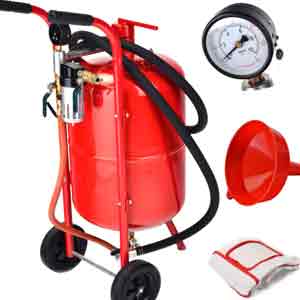
Cleaning off old paint, grease or rusted areas of metal is a hard job because it takes too much time and is slow as a tortoise. Even if a small area is to be scrubbed off of paint, it will take hours to chisel it off or hard wipe using emery paper. This manual technique had been used for many, many years until abrasion blasting got invented.
Sandblasting is a powerful technique to clean away just about anything from a surface. It brings in innovative ways to do different tasks which don’t always mean cleaning a layer. In fact, the sandblaster is used even by glass sellers who perform contractual glass works including etching designs on glass and windows while denting and painting centers extensively use it to scrape up old paint. Similarly, industrial applications also involve a similar process called shot peening to the material to give it extra life of strength.

Whether it’s is big or small sectors, most of them use a sandblaster to perform surface cleaning. The most wide use of a sandblasting equipment is treatment of metal for painting applications. However, companies which extensively have their engineering components, diecast parts, engine blades and fins prone to exposure to climatic conditions, are required to use compressed abrasive media for a thorough cleaning of debris and dust from those metallic parts.
Often big industrial sectors are in constant requirement of sandblasting services. These include aviation, shipyards, iron components or steel industries. Sand blasting is the best option for repainting treatment because it leaves behind a clean, scratch less area that makes up a perfect layer for the paint to stick on because it provides a uniformly consistent fine or matt surface depending on the type of abrasive used and the type of surface required.
Sand blasting is one of the processes that must need prior calculation before you start work. Once you have a blast media selected, the powerful compressive strength must match up to the resistance of the surface you must work on for your project. Since the blasting process can destroy your surface if extremely high, it should be kept low and gradually increased unless the surface being profiled is apparent to you. A surface file gauge can be used to check the desired profile. Taking note of the time and pressure used with the particular abrasive will help you gain similar tasks at ease.
Sand blasting is still the best thing for cleaning and retreating metal, it is quick, safe and economical. Unlike manual cleaning, sandblasting doesn’t take a day and it can be done in narrow edges and small corners where human hand is unable to move.
While an initial testing is pertinent, determining the blast media, compressor settings and hose size are the ultimate factors to influence the final result that will show after you complete the blasting process. This will also help you estimate other costs of your blasting project in total.
